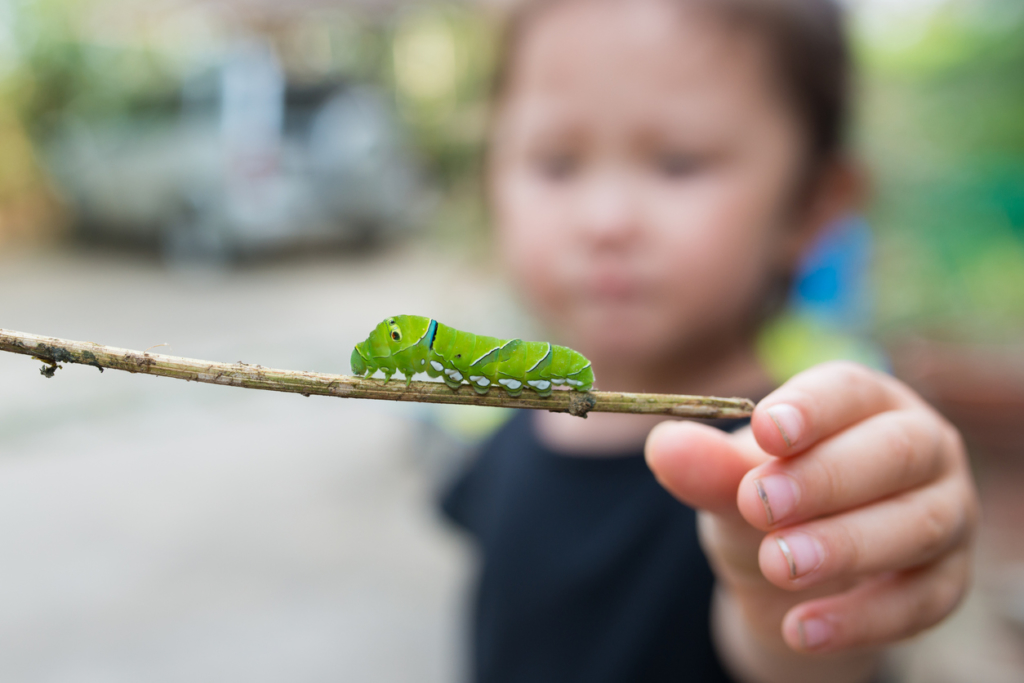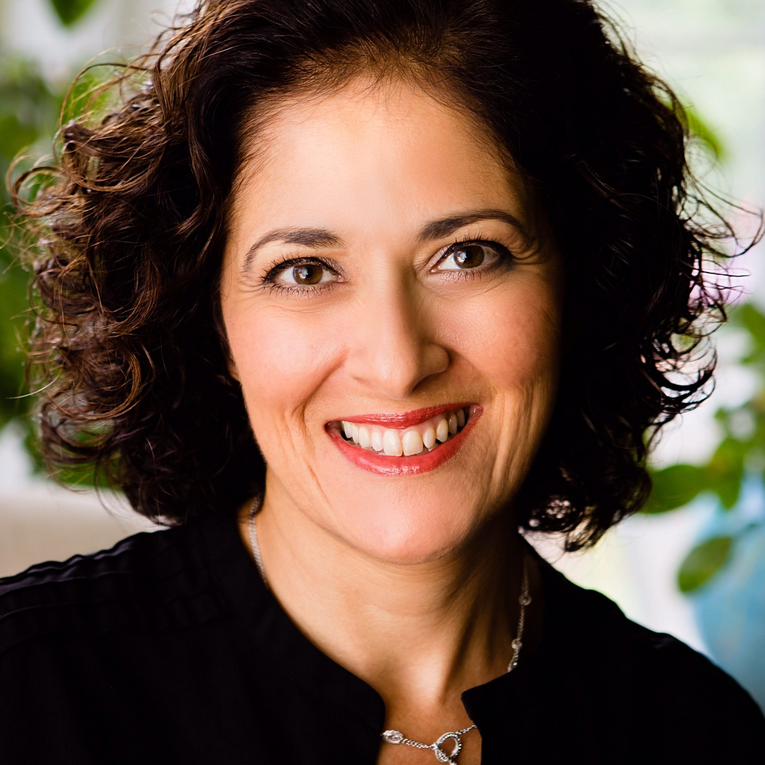As one world implodes on itself, a new one is being born.
Homa Tavangar, Co-Founder, Big Questions Institute
A metaphor I’ve been continually reminded of since the COVID-19 pandemic began is that of the butterfly. Not the familiar one where the caterpillar turns into a majestic monarch—demonstrating all the beauty and potential I have within me; but the uglier one that shows up in-between the before and after.
In the period of “during,” the caterpillar, once content to wander about collecting food, now goes into its protective shell, hidden from view, twisting, struggling, and growing within a confined space that gets harder and harder over time. The chrysalis (cocoon for moths), or in-between stage, is also known as the pupa, which literally sounds sh*tty. This is especially true if one loses sight of its purpose, which is to arrive at the final stage of emergence and transformation.
As much as we fixate on the before and after in the butterfly story, since the start of the pandemic, we have been living in a collective story of “during.” Many of us have been struggling inside our shells, whether that has meant adjusting to online schooling, losing childcare, feeling stir-crazy, or finally seeing the gaping inequalities at the foundations of every social institution. And, as much as we’d like to go back to the comforts of the normal we knew pre-pandemic, that might be as foolish as the caterpillar pining to return to its wandering “before” times. Stepping into the unknown is hard and scary. But, it’s necessary.
Liminality in Individuals, Organizations, and Societies
Anthropologists have a corollary to the cocoon stage—a universal experience that’s shared across history, culture, and geography. This is the liminal space—a time of trial in preparation for a transition. Liminality might be expressed as a rite of passage during adolescence. Youth are tested to their limits in preparation for adulthood—like a Walkabout among Australian aborigines or moving into a university dorm for Americans. In architecture, a liminal space can look like a hallway, a transition from one space to the next.
A recent Harvard Business Review article explored liminality as it applies to organizations. During the pandemic, every organization has experienced disruption, and it has offered “potent opportunities for reflection, discovery and even reinvention.” In this context, liminality describes our collective experience during the pandemic, as well as unique, individual journeys that have included coping, grieving, discovering, and adapting.
In our liminal experience, we see both unity and difference, collective impact and profound isolation, awe-inspired creativity and overwhelming exhaustion. Just like the caterpillar, we are twisting, struggling, and growing. The good news is that changed individuals change cultures when they work together.
Although it might feel like the only change happening is inside our own isolated shells—and maybe even that nobody else is experiencing change themselves—we must recognize this isn’t true. Once we poke our heads out, we’ll see how many others have been on their own journeys of change and have come to a shared conclusion: we can’t go back to normal. Instead, we must emerge forward, collectively.
To return to pre-pandemic schooling would be to sweep aside the lessons from our collective global time-out.
Homa Tavangar, Co-Founder, Big Questions Institute
Historically, liminality has happened at the societal level when social hierarchies are reversed or dissolved, when order collapses. When philosopher Karl Jaspers coined the term axial age, he described a period in-between distinct world views. It was a time in-between rounds of empire building, during which clear social, philosophical, and political pivots took place. Societal liminality is marked by asking radical questions, by widespread and deep uncertainty, and by a loss in faith in previously reliable institutions. Unlike a rite of passage, there is no clear ending. In other words, going “back to normal” isn’t an option, but neither is knowing “when will this be over?”
Might we be experiencing another liminal point as a civilization? A debate rages over whether we are right now experiencing the most influential time ever, with some concluding that we are at “the hinge of history.”
Like an axial pivot, we may be living through an existential turning point. Since history is being written as we navigate it, we can’t know who’s right, yet. But, what if we acted as if we were on the hinge of history? What would change?
How Educators Can Learn from Liminality
While education systems have been profoundly impacted by the pandemic, the status quo is just around the corner, ready to pull us back in. To return to pre-pandemic schooling would be to sweep aside the lessons from our collective global time-out. As adrienne marie brown expressed: “Things are not getting worse, they are getting uncovered. We must hold each other tight and continue to pull back the veil.”
Pushing forward won’t be easy and, at times, might even be painful when we consider everything that must be shed in order to emerge transformed. But, not everything must be discarded. Remarkably, from chrysalis to butterfly, the insect carries memories with itself into each phase of life. The same can be true with education. In 9 Big Questions Schools Must Answer to Avoid Going “Back to Normal” (co-written by Will Richardson and myself), we start with the question “What is Sacred?”—acknowledging some traditions are sacred and worth carrying into even the most changed environments.
During the liminal period, where clear solutions are hard to come by, we can find some footing by noting what exists today that we want to carry forward with us. With those artifacts in tow, we can jump into the work that demands relentlessly asking big questions that invite us to detach ourselves from the certainty of before and after, and stay focused on the during. But, embracing the uncomfortable, messy, uncharted territory of this liminal space has many benefits.
First and foremost, we can interpret our times and our roles as being located squarely within a transition period. If we are operating in the chrysalis of change, then we must embrace a vision of ongoing change. This is true from technology to curriculum to racial justice. The more of us who are aware of this, the faster our walk down the liminal hallway of transition will take place. The more we resist, the longer the hallway becomes—again, there is no going back.
Second, if we are living in liminal times as a global society, then we must treat our students as civilization builders. It’s long been recognized that education today is setting students up to solve problems and use technologies that don’t yet exist. If we take this to heart and practice, this means that a successful future entails a contribution toward a greater good and not merely a well-paid job. And, that the “normal” (old, tired, broken) structures of school won’t prepare students for the future.
Finally, we must consider ourselves futurists. As educators, we are the ultimate futurists. We stake our success on the ability of our students—the leaders of tomorrow—to solve difficult, meaningful problems that will advance and heal the world. Futurists are inherently optimistic. They confront the unknowns of the future, however uncomfortable that might be. They sustain hope with deliberate effort. As Mariame Kaba wisely counseled, “hope is a discipline.” This means that hope is anchored in science, iteration, effort, and justice.
As uncomfortable as this long hallway of collective liminality feels, it can also be exciting. As one world implodes on itself, a new one is being born. Patience and courage mark the experience of the chrysalis. To have even a minuscule hand in shaping what emerges seems like the most worthwhile endeavor we could dedicate ourselves to.

